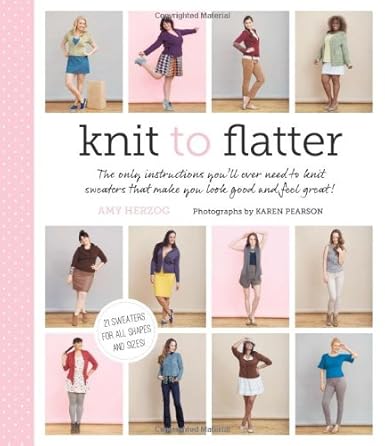If you've ever thought "nice pattern, shame about the yarn", then the ability to successfully swap the yarn for one you'd prefer to use is invaluable. There are a number of other scenarios where you might want to deviate from the pattern path:
- the yarn recommended has been discontinued - especially true if using a vintage pattern
- you can't wear or handle that particular fibre e.g. wool allergy (how awful would that be for a knitter!!)
- you have acquired or been gifted a bagful of lovely vintage yarn, previously believed to have been extinct, so you are unlikely to find a pattern to go with it
- the yarn is too expensive for your budget, or indeed you would like to upgrade to a luxury yarn.
- you've got a tonne of stash already (unlikely I know, but it can happen!)
- the recommended yarn only comes in colours that simply don't do it for you.
- just because you are a rebel and want to put your own stamp on it ;-)
In this tutorial I share what you need to know to substitute a yarn with one of the same tension (gauge) which means you won't have to adjust the pattern in order to knit up your project. Although this makes for a relatively straight forward switch, there are a number of important considerations you should take into account when choosing your replacement yarn.
Weight & Tension (Gauge)
Ensuring your new yarn closely matches the weight and tension (or gauge) of the one stated in the pattern is key to a successful yarn swap where you don't want to have to transpose the pattern, and looking at these is the best place to start.
The simplest way to do this is to match the tension (gauge) on your preferred yarn's ball band/product description to that of the yarn used in the pattern. This is easy enough to do if you are in the yarn shop with the actual balls of yarn in front of you to compare. However if this is not the case you will need to deepen your understanding of weight & tension, so take a big breath and read on....
The
weight of a yarn in knitting terms refers to the thickness or fineness of it rather than it's weight as such (e.g. 50g ball). It's important to get a similar weight or you may be disappointed
with how your knit turns out compared to the one pictured on the
pattern. Sometimes this is made explicit in the name of the yarn which
may include terms like 4ply, DK, Aran, Chunky etc. However this is often
not the case, so a little detective work may be in order. Your
best friends here are the pattern instructions and yarn labels which
will provide useful clues such as the size of needle and tension. There isn't a definitive standardised way of categorising weight of yarn, but the Craft Yarn Council (US) has attempted to address this with their
standard yarn weight system which is useful here. The tension and needle size provided can help you discern the weight of the yarn.
So for example, if your pattern states the tension is
22st and 30 rows to 10cm (4in) measured over stocking (stockinette) stitch using 4mm needles, referring to the
Craft Yarn Council's chart, this yarn most likely falls into the DK (Light worsted) category. So now you know you are looking for a DK yarn....
It's also helpful to understand the difference in UK versus US terminology shown in the table below:
UK
|
US
|
4ply
|
Sport
|
Double Knitting
|
Light Worsted
|
Aran
|
Fisherman/Worsted
|
Chunky
|
Bulky
|
Super Chunky
|
Extra Bulky
|
Tension (gauge) is the standard way of communicating how loosely or tightly the yarn has been knit for that particular project and can vary depending on the desired effect, so the tension is not cast in stone for any particular yarn. However most yarns will be assigned an average tension, or average range of tension by the manufacturers, and this will also give you some idea of the weight of the yarn.

The most common way of quantifying tension is to give the number of stitches and rows needed to make a 10cm (4 inch) square, and the size of the needles used. Unless otherwise stated this generally refers to squares knit in stocking (stockinette) stitch. You can usually find this information on the ball band, or if browsing online it is often included in the yarn description. However, if the knitted project has a decorative stitch pattern, the tension will most likely be expressed in stitches and rows knitted in that particular stitch pattern, which will
not equate to a tension measured over stocking stitch and so it's trickier to compare to other yarns. If this is the case another pattern in the same book may use that yarn & needle size with stocking stitch, or again you can browse the internet for that information. Having established a likely candidate of yarn you should ideally knit a test swatch in the relevant stitch pattern to make sure this will work out ok for you.
Texture & Colour of Yarn
Having established the right weight & tension, you need to turn your attention to other qualities of both the pattern's yarn and the one you want to replace it with. Is the yarn plain or variegated? Does it have any texture? If the pattern has a lot of fancy stitch detail then this will be obscured by texture and a lot of colour, so will be a waste of all that lovely stitching. As a rule of thumb the more decorative the stitches are, the smoother and plainer the yarn needs to be to show it off to it's best advantage. Likewise the plainer the knitting, the more coloured or textured yarns can be shown to best advantage.
Type of Fibre & Handle
The type of fibre the yarn is made of can be an important factor in terms of:
- what you like the feel of
- what you can or can't wear
- aftercare in terms of hand or machine washing
- strength of the yarn - e.g. heavy wear items like socks will need some synthetic in the mix for strength.
It will also dictate what sort of handle, or drape the knit up fabric will have, and two different yarns that have the same tension can be extremely different in terms of how the resulting fabric behaves. Some yarns will be be full bodied with bounce (such as merino), others will be inelastic (such as cottons), and some will be relatively limp. This has a large impact on the resulting object or garment, and getting it wrong can lead to disappointing results - for example a robust yarn may work well for a bag or cushion, but could be less than fetching as a lacy stole.

The type of fibre used can often be found on the ball band (see left). If you
know your fibres, you'll probably be able to guess what the handle might be, but the best way to know for sure is to make a swatch. Now I know many of you knitters out there balk at the thought of knitting up a swatch, but it will save you wasting all those hours of knitting in vain if you chose your yarn unwisely, and it's just knitting afterall - aren't knitters suppose to like knitting??? You need to knit a generous sized swatch (6 or more inches) so it is large enough for you to have a clear idea how the resultant fabric will behave.
Meterage / Yardage
Having now selected the yarn you would like to use, you need to know what quantity you are going to require. In order to make sure you have enough yarn, you will need to work out the meterage/yardage - or as I like to call it, mileage :-). It is not enough to just match the number of balls or skeins listed in your pattern, as all is not equal in a 50g ball! The fibre content, thickness and texture can all have a large impact on how light or heavy the yarn is. The heavier the yarn is, the fewer metres you are going to get per gram. If you are lucky the pattern will also state the meterage/yardage of yarn per
ball which you'll need to know when you come to working out the number
of balls of yarn to get. If you don't have it to hand you can probably find this info with a trip to the yarn shop, or indeed the click of a mouse!
You will first need to convert the pattern's yarn to total metres/yards, so you need to multiply the number of metres/yards per ball by the number of balls required.
Example: Pattern states 10 x 50g (125m/136yds) balls of yarn X. To work out total metre/yards needed:
10x 125m = 1250 (or 10 x 136yds = 1360 yds)
So now you know you need 1250m/1360yds, you can work out how many balls you need of the new one by dividing total metres/yards by the netres/yards per ball of the new yarn.
Example: new yarn states ball size is 50g (175m/191yds).
1250 metres or 1360yds = 7.14 balls approx
175 191
Obviously you can't buy 0.14 of a ball so you round this up to 8 balls, and you may want to add an extra on in any case just to be sure you won't run out and to allow for swatching for tension.
If you are unable to ascertain the meterage/yardage of the yarn stated in the pattern, particularly if it's a vintage pattern and ancient yarn, then you will just have to make an educated guess, bearing in mind
the fibre content (e.g. cotton has a lower meterage than wool), then add a few balls on to be on the safe side.
It Doesn't Have To Stop There...
One of the simplest ways to customise a pattern is to replace the yarn stated in the pattern with another that has a similar weight & tension, however the fun doesn't have to stop there! With a few more calculations you can alter patterns to use a yarn of a different weight. Also you may find there are other elements of a pattern you would like to modify to suit your shape and style better. You can learn more about customising knits by attending my
Custom Knits Workshop at Swansea in March which you can
book here. Also the following resources may be useful to you for finding further information & articles about altering patterns (click on the pictures below):
If you've enjoyed this post, why not sign up below for for news and updates ?








